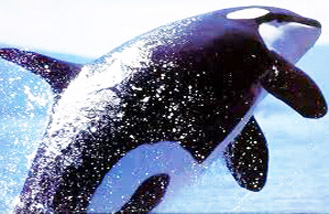Orca Whale

Common Name: Orca Whale
Scientific Name: Orcinus orca
Orca Whale : Description
The Orca whales or killer whales are 'toothed' whales, with true teeth rather than fibrous plates for filter-feeding.Usually black and white, in Antarctic waters their skins are covered with a film of plankton called diatoms, which gives them a brownish and yellowish hue.
Orca Whale : Diet
Orcas are born into a family group and remain with that group for the rest of their lives. As a result, they form very highly co-ordinated hunting packs, which are comparable to wolves or African wild dogs. Once they decide to tackle a prey animal, it often has little chance of escape.
Orca Whale : Region Found
During the summertime in the northern Canadian high Arctic bays and fjords, male narwhals can be seen carefully crossing their tusks as though sword fighting and making a strange, sad whistle.
Orca Whale : Feed
They feed on fish and squid, on Adelie and emperor penguins, Weddell, crabeater and leopard seals, and on minke and other baleen whales.
Large males will often take on the most dangerous jobs when tackling potentially dangerous prey, but females appear to be responsible for teaching hunting techniques to their young.
Orca Whale : Habitat
Killer whales are most abundant in colder waters, including Antarctica, Norway, and Alaska. It can also be fairly abundant in temperate waters.They occur, at lower densities, in tropical, subtropical, and offshore waters.
Orca Whale : Distribution
Previously thought to live on the outer fringe of the pack ice, but now they can live deep in the ice, even in winter.
They are common in Antarctic waters, with a population estimated at about 70,000.
Orca Whale : Types
Residents killer whale.
Transients killer whale.
Offshores killer whale.
 Deep Sea Crabs
Deep Sea Crabs